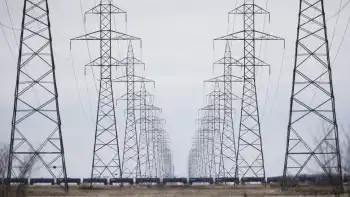MillÂ’s power going green
When the conversion of its existing coal-fired boilers is completed by the end of 2009, Smart, which operates the former Champion paper mill and emerged from bankruptcy reorganization in 2007, will produce all its coated and uncoated paper without burning fossil fuel.
"The production of these papers will leave the lightest environmental footprint of any premium coated or uncoated printing paper produced in North America," said Tim Needham, Smart Papers' chairman and CEO.
Needham said Smart's corporate clients are increasingly interested in environmentally friendly practices.
"We think this (investment) will add value to our product line," he said.
Needham said Smart's owner, privately held Plainfield Asset Management, a Greenwich, Conn., hedge fund that acquired the 115-year-old papermaker out of bankruptcy, is financing the investment.
The biomass fuel Smart Papers plans to burn in its boilers is waste material, such as yard waste and wood scrap, and emits no net carbon dioxide. In addition, Smart said no food crops will be used and no timber will be harvested to provide its fuel.
Generating electricity with renewable fuels is one of the main goals of Gov. Ted Strickland's energy plan, which he recently signed into law. It calls for up to 12.5 percent of the state's electricity to come from renewable sources by 2025.
William Spratley, executive director of Green Energy Ohio, the Columbus-based nonprofit encouraging development of the state's renewable energy resources, called Smart's announcement "very exciting. On-site generation of this type of plant will serve as a model for other manufacturers."
Smart has begun construction of four electric turbines, two condensers, a cooling tower and related equipment supplied by Honeywell Inc. That installation should be completed by year-end. The company will then begin conversion of its two coal-fired boilers to burn wood waste and yard waste. Ohio ranks seventh nationally in availability of biomass stocks, according to the Department of Energy.
Dan Maheu, Smart Papers president and COO, said that when the project is completed, the plant's generating capacity will be increased from 24 megawatts to 36 megawatts.
Initially, the biomass-produced power will be used only for paper production, but by the end of 2010, the plant expects all its operations will be carbon-neutral and it will be able to supply electricity back to the power grid.
Separately, Maheu said Smart is expanding employment by about 50 jobs to handle its recent purchase of Canadian-based Domtar's paper lines at the 106-acre Hamilton plant.
Related News

WY Utility's First Wind Farm Faces Replacement
WYOMING - A Wyoming utility company has filed a permit to replace its first wind farm—originally commissioned in 1998, composed of over 65 turbines—located at Foote Creek Rim I. The replacement would downsize the number of turbines to 12, which would still generate roughly the same energy output.
According to the Star Tribune, PacifiCorp’s new installation would involve new nacelles, new towers and new blades. The permit was filed with Carbon County.
New WY Wind Farm
The replacement wind turbines will stand more than twice as tall as the old: Those currently installed stand 200 feet tall, whereas their replacements will tower closer…





